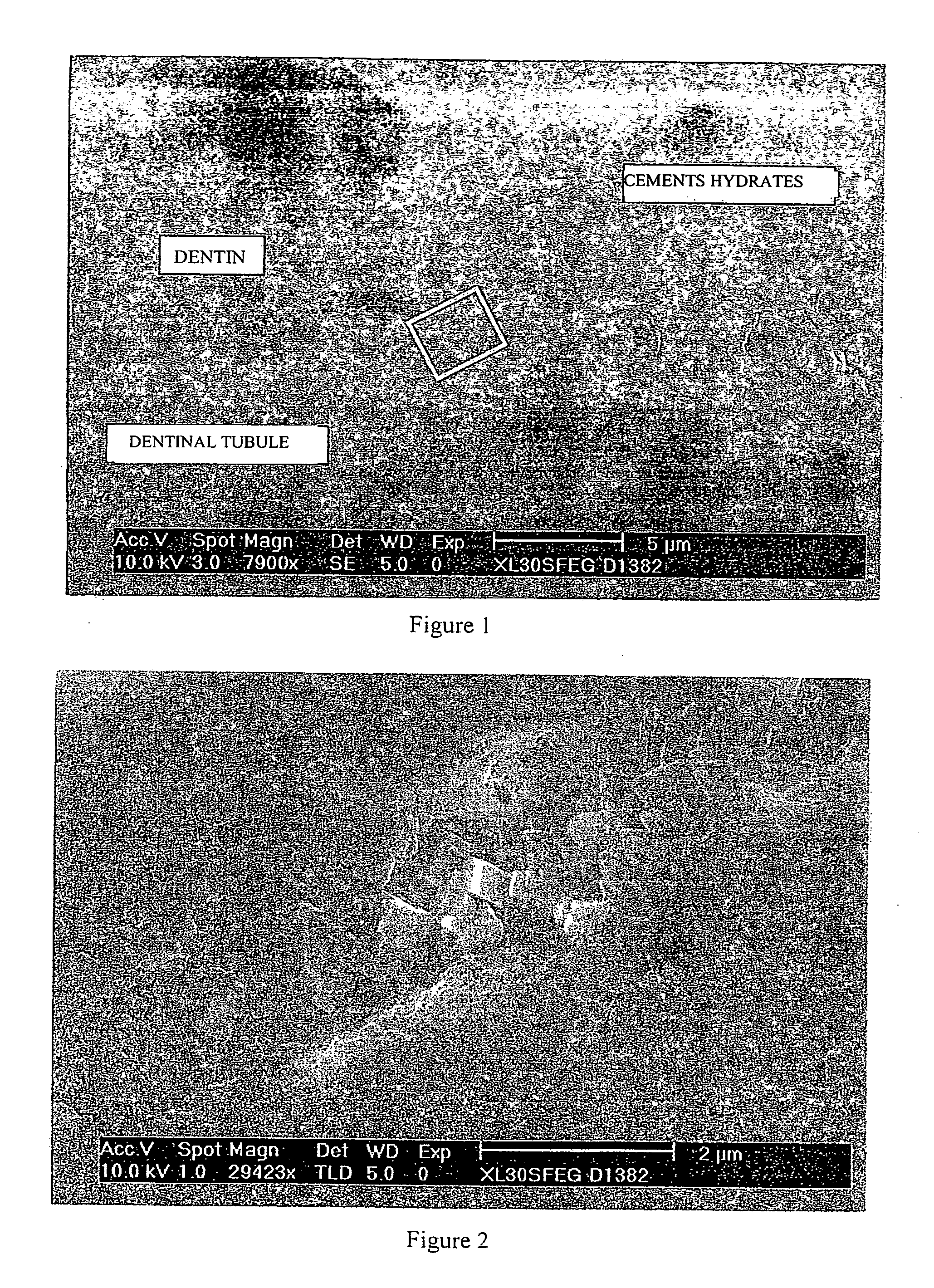Preparation for producing a material used to restore a mineralised substance, particularly in the dental field
a mineralised substance and material technology, applied in the dental field, can solve the problems of inaesthetic metal appearance of fillings made with silver amalgam, affecting the appearance of fillings, so as to increase the range of colours
- Summary
- Abstract
- Description
- Claims
- Application Information
AI Technical Summary
Benefits of technology
Problems solved by technology
Method used
Image
Examples
Embodiment Construction
)
[0070] The material according to the invention used as a dental cement to restore the premolar, of which one part is shown in FIG. 1, was prepared from the following preparation, in a liquid part / solid part mass ratio of 0.21:
Solid part (for 100 g):Ca3SiO585gCaCO315gLiquid part (for 100 ml):CaCl2, 2H2O14.7gwater-reducing agent3gwaterg.s.f. 100ml
[0071] The powdered raw materials of the solid part used are micronised at least for this dental use. Preferably and generally, their particle size is less than 10 microns.
[0072] In this example, the particle size characteristics of the various constituents are as follows:
for Ca3SiO5:d10 = 0.81 μmd50 = 3.16 μmd90 = 7.51 μm
[0073] with dx representing the maximum size reached by x% of the particles of the compound considered, in this case for Ca3SiO5. [0074] for CaCO3, the average diameter of the particles is between 50 and 100 nm.
[0075] According to a different embodiment, the preparation according to the invention can contain zirconium...
PUM
| Property | Measurement | Unit |
|---|---|---|
| Fraction | aaaaa | aaaaa |
| Fraction | aaaaa | aaaaa |
| Fraction | aaaaa | aaaaa |
Abstract
Description
Claims
Application Information
 Login to View More
Login to View More - R&D
- Intellectual Property
- Life Sciences
- Materials
- Tech Scout
- Unparalleled Data Quality
- Higher Quality Content
- 60% Fewer Hallucinations
Browse by: Latest US Patents, China's latest patents, Technical Efficacy Thesaurus, Application Domain, Technology Topic, Popular Technical Reports.
© 2025 PatSnap. All rights reserved.Legal|Privacy policy|Modern Slavery Act Transparency Statement|Sitemap|About US| Contact US: help@patsnap.com


